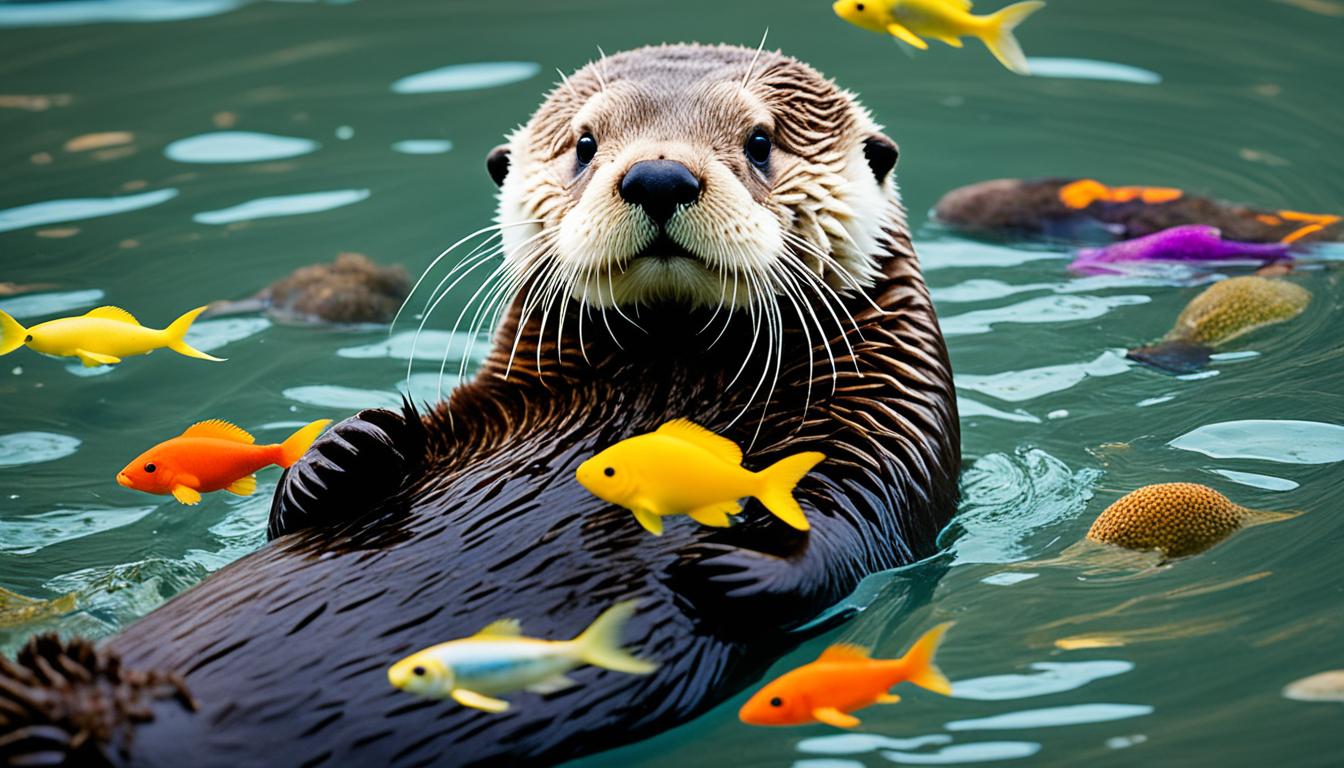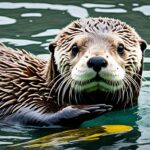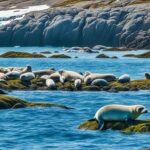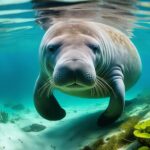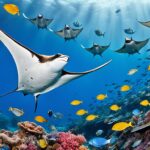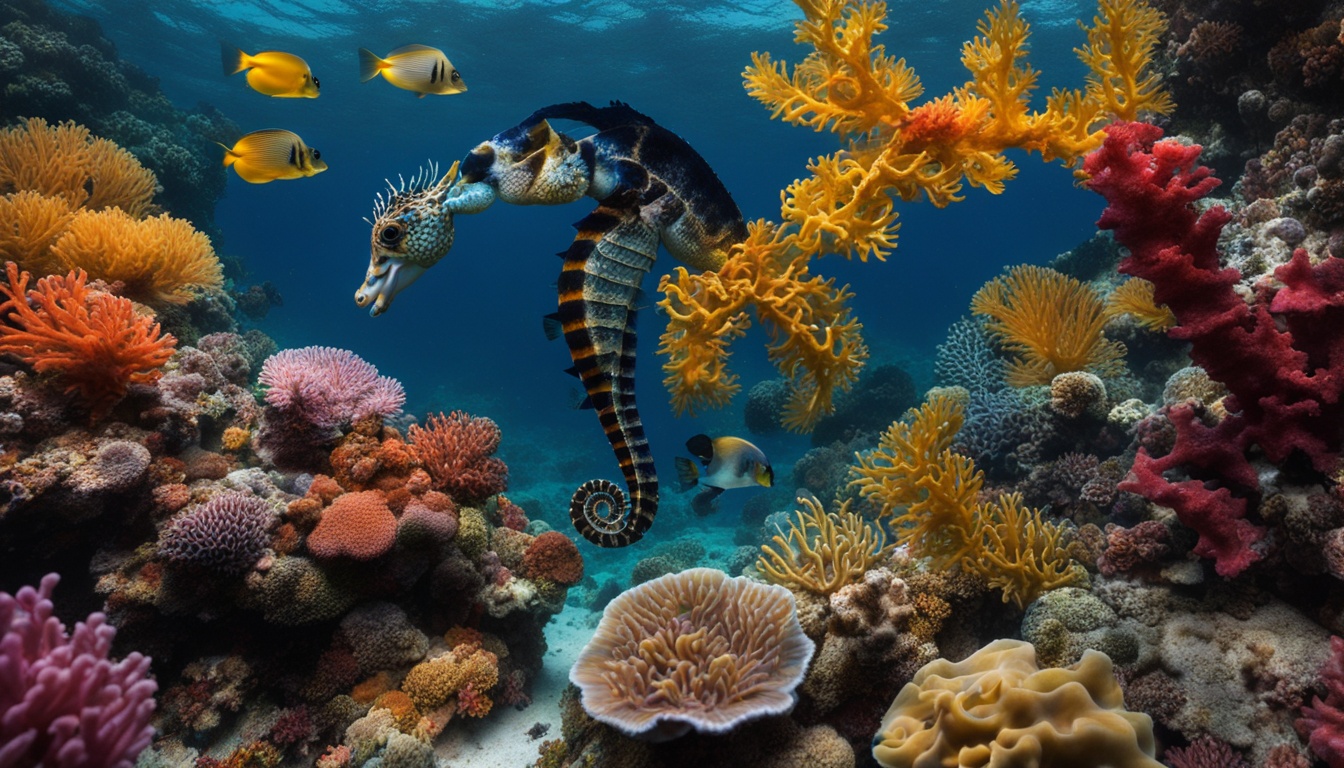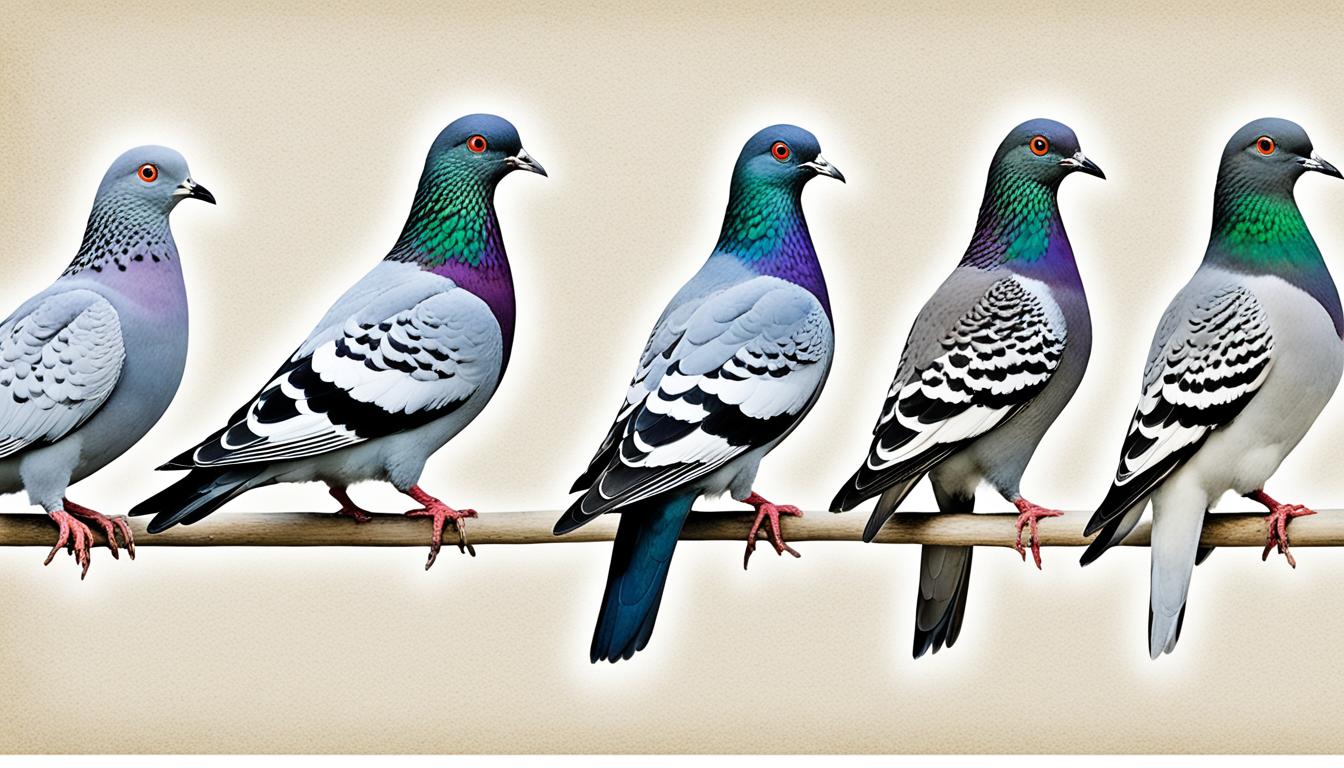Sea otters are key players in the complex world of marine ecosystems. Their actions fascinate scientists and nature lovers alike. They show us how important they are to their surroundings. By learning about their interactions, we see how they help many other species and keep the ecosystem balanced.
This section will dive into the interesting ways sea otters behave and connect with other sea creatures. You’ll see how they act as a keystone species, affecting many populations and keeping the balance in the ocean.
Understanding Sea Otter Behavior and Their Role in Marine Ecosystems
Sea otters play a key role in their habitats as keystone species. They greatly affect marine ecosystems, keeping them in balance. This balance supports many marine lives. Sea otters are crucial for coastal environments’ health, shown by their interactions with other species.
Characteristics of Sea Otters as Keystone Species
Sea otters are vital in their ecosystems. They are known for:
- Controlling prey populations: They mainly eat sea urchins, preventing them from overgrazing kelp forests.
- Facilitating biodiversity: Healthy kelp forests, thanks to sea otters, support many marine species.
- Stabilizing marine habitats: They help nearshore ecosystems stay resilient against environmental changes.
Importance of Sea Otters in Maintaining Kelp Forests
Sea otters and kelp forests have a strong connection. Without sea otters, sea urchins could destroy these important ecosystems. Kelp forests are crucial for many reasons, including:
- Carbon sequestration: Kelp absorbs carbon dioxide, helping to fight climate change.
- Habitat provision: They provide shelter and breeding grounds for many species.
- Supporting fisheries: Healthy kelp forests lead to more fish, benefiting local fisheries.
Learning about sea otter behavior is key to saving them. Protecting these marine mammals helps them and the entire marine ecosystem. It also supports the complex relationships within it.
How do sea otters interact with other marine life?
Sea otters have fascinating interactions with other marine life that are key to many ecosystems. They play a big role in keeping marine species in balance. By understanding how these animals affect their world, we learn about the complex relationships between predators and prey in the sea.
Impact of Sea Otters on Sea Urchin Populations
Sea otters are known for controlling sea urchin numbers. They eat sea urchins a lot, which stops these creatures from eating too much kelp. Without sea otters, sea urchins could destroy kelp forests, leaving the ocean floor bare.
Predator-Prey Relationships between Sea Otters and Other Species
Sea otters are skilled hunters, affecting many marine animals. They eat sea urchins and other creatures, which changes how many of these animals there are. These relationships show how important sea otters are for keeping the ocean’s balance.
| Predator | Prey Species | Impact on Prey Population | Ecological Significance |
|---|---|---|---|
| Sea Otters | Sea Urchins | Reduces Sea Urchin Numbers | Protects Kelp Forests |
| Sea Otters | Crabs | Regulates Crab Population | Maintains Biodiversity |
| Sea Otters | Sea Snails | Controls Snail Dynamics | Supports Marine Health |
The Diet of Sea Otters and Its Impact on Marine Species
Sea otters are key players in the ocean’s ecosystem. They eat a wide variety of foods, which helps keep marine habitats healthy. Their diet supports the balance of nature and increases the variety of life in their homes.
What Sea Otters Eat: A Diverse Diet of Marine Life
Sea otters eat many different sea creatures. They enjoy:
- Sea urchins
- Abalone
- Crabs
- Mollusks
- Other marine invertebrates
These foods are crucial for the ocean’s ecosystem. Sea otters eat a lot, up to 25% of their body weight each day. This helps control the numbers of other sea creatures in their area.
Role of Sea Otters in Controlling Population Dynamics
Sea otters do more than just eat. They help keep sea urchins from getting too many. This is good for kelp forests, which are important for many sea animals.
| Prey Species | Impact on Marine Habitats |
|---|---|
| Sea Urchins | Overpopulation can lead to kelp destruction. |
| Abalone | Helps maintain the balance of marine vegetation. |
| Crabs | Controls crustacean populations, preventing ecosystem imbalance. |
| Mollusks | Provides nutrients necessary for a healthy marine food web. |
In summary, sea otters are vital for ocean life. They eat in a way that keeps the ocean diverse and healthy. Their actions help make the ocean a stable and thriving place for many creatures.
Communication Methods of Sea Otters
Sea otters have complex ways of talking to each other. They use sounds and body language to connect within their groups. This shows how they relate to each other and their surroundings.
Vocalizations and Body Language in Sea Otters
Sea otters make many sounds like low coos, grunts, whistles, and high-pitched squeals. These sounds are often heard between mothers and their pups. They also use body language, like touching and sniffing, to stay close.
Their way of communicating is key to their daily life. It helps them find food, care for their young, and stick together in groups. Their actions also affect other sea creatures, showing how connected they are in the ocean.
Sea Otters and Human Interaction
Sea otters and humans have a complex relationship that affects their survival. The human impact on sea otters comes from many activities. Some help, while others harm. Conservation efforts protect these marine animals, but pollution and habitat damage threaten their numbers.
Impacts of Human Activity on Sea Otter Behavior
Human actions change sea otter behavior a lot. Coastal development can destroy their homes and food spots. Pollution from farms and cities makes the water unhealthy for them.
Fishing that targets their food, like sea urchins and crabs, is another problem. With less food, otters may look for more, which is tiring and stressful.
| Human Activity | Positive Effects | Negative Effects |
|---|---|---|
| Conservation Initiatives | Supports recovery of sea otter populations | None |
| Pollution | None | Harms health and habitats |
| Coastal Development | None | Reduces habitat availability |
| Fishing Practices | Can promote sea urchin population control | Reduces food sources for otters |
Understanding how humans and sea otters interact is key to saving them. We need to find a balance between protecting wildlife and managing our actions. This will help ensure the future of these amazing sea creatures.
Conservation Efforts for Sea Otters
Protecting sea otters is key for the health of our oceans. Laws help ensure they can survive. These laws protect the species and their homes. They also show how important it is to keep their habitats safe.
By working together, we can help sea otters and the ocean. This makes the ocean stronger for all living things.
Legislation and Protections for Sea Otters
Laws are crucial for sea otters. The Marine Mammal Protection Act and the Endangered Species Act protect them. These laws fight against threats to their numbers.
Local efforts focus on keeping their homes safe. This lets sea otters live in a healthy environment. As laws change, they keep up with the challenges of climate change and the ocean’s health.
Community Involvement in Sea Otter Conservation
Local communities are key to saving sea otters. You can help by spreading the word, watching over their homes, and raising money. Learning about sea otters and their ocean friends helps people support their protection.
Together, we can make a big difference. Every action helps keep the ocean and its creatures healthy.
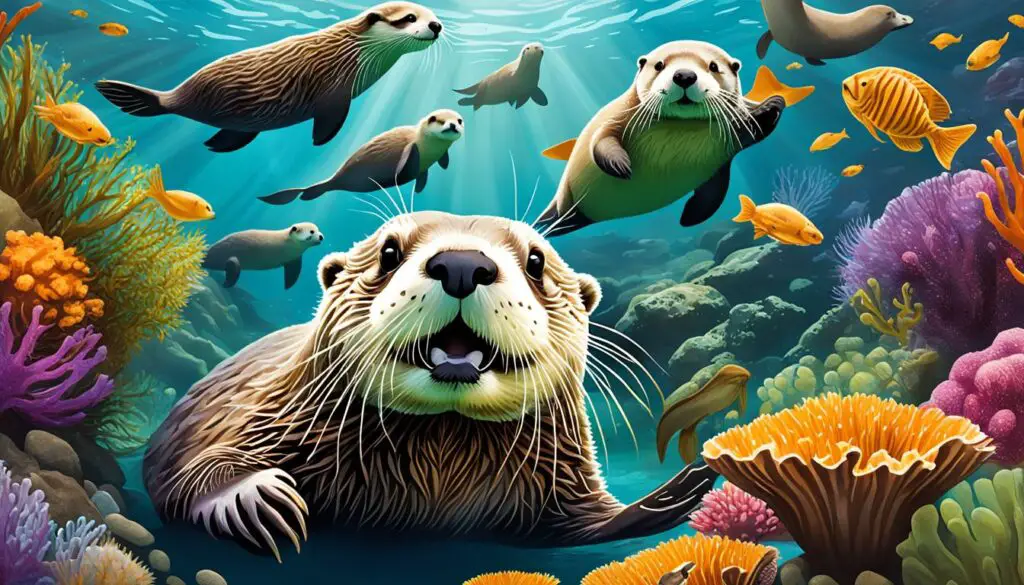
Natural Predators of Sea Otters
Sea otters are a key part of their marine world, but they face threats from other animals. These threats help shape their numbers. They show how every living thing in the ocean works together for a healthy sea.
Understanding Predator-Prey Dynamics in Coastal Waters
Great white sharks, orcas, and sea lions are among the sea otters’ natural foes. These predators change how sea otters live and where they stay. For instance, the fear of being eaten makes sea otters live in kelp forests. These forests are safe and important for many sea creatures.
This shows how sea otters and their predators are connected. This connection affects not just the otters but also the whole ocean. Knowing about these relationships helps us protect the ocean and its life. We need to keep studying these interactions to help the ocean stay healthy despite changes.

